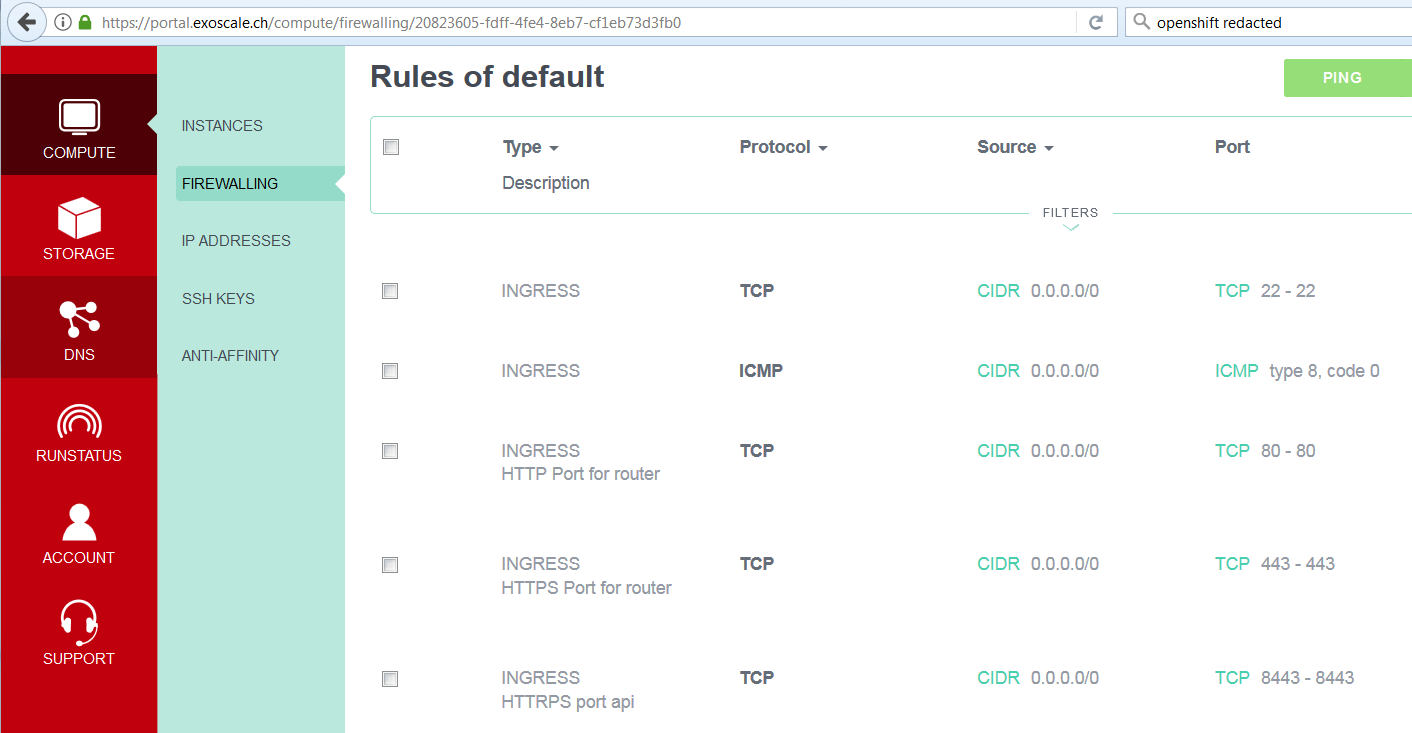oc cluster up GUI on exoscale
AWS and Azure are very well known cloud provider and they are really good.
I wanted a real European company where my setup is running, therefore I decided to run my workload on exoscale.
I describe here how you can setup in an quick and easy way a OpenShift Cluster via oc cluster up
Please read Quick start guide the Before you start to prepare your account for the next steps.
add security rules
You will need to add some ports to the security rules. As you have read in the quick start guide that by default all ports are closed.
I suggest to add the following ports to the default security group.

add instanze
Now let’s create the instance for the OpenShift developer.


Press Create and wait until the instanze is up
install packages
There are some required packages to be able to run OpenShift on CentOS 7.
yum install -y docker bash-completion
I strongly suggest to make a yum -y update && reboot to have the latest patched versions.
configure and start docker
There are two files where you should add the OpenShift registry
/etc/sysconfig/docker
This is the well known and common file where almost everyone add the registries and the docker config paramters.
Just add the following lines into the File.
ADD_REGISTRY='--add-registry 172.30.0.0/16'
INSECURE_REGISTRY='--insecure-registry 172.30.0.0/16'
/etc/containers/registries.conf
This new file is from project atomic and it looks like that this File will be used in the future to maintain registries.
Here are some links where you can get mor information about this topic.
the github link
(8) Move docker registry information from /etc/sysconfig/docker to /etc/containers/registries.conf
docker is using a new configure file to defined registries
I have added the following lines into the File, don’t be surprised when the file does not exist.
[registries.search]
registries = ['docker.io','172.30.0.0/16']
[registries.insecure]
registries = ['172.30.0.0/16']
start docker
Now run the docker daemon systemctl restart docker
get OpenShift
Download OpenShift and add bash completion to the shell
curl -vLO https://github.com/openshift/origin/releases/download/v3.6.1/openshift-origin-client-tools-v3.6.1-008f2d5-linux-64bit.tar.gz
tar xfvz openshift-origin-client-tools-v3.6.1-008f2d5-linux-64bit.tar.gz
export PATH=/root/openshift-origin-client-tools-v3.6.1-008f2d5-linux-64bit:$PATH
source <(oc completion bash)
start the cluster
With the simple command below
MY_IP=$(ip address show dev eth0|awk '/inet .* eth0/ { gsub("/..","",$2); print $2}')
oc cluster up --public-hostname=${MY_IP}
You should now get the following output.
Starting OpenShift using openshift/origin:v3.6.1 ...
OpenShift server started.
The server is accessible via web console at:
https://185.150.11.37:8443
You are logged in as:
User: developer
Password: <any value>
To login as administrator:
oc login -u system:admin
exoscale api
If you want to get the external IP from the exoscale api then please take a look into the Get started with the Exoscale API client
Tip
You will need the following repo to install pip
yum install -y http://ftp.linux.org.tr/epel/7/x86_64/e/epel-release-7-10.noarch.rpm
yum -y install python-pip
